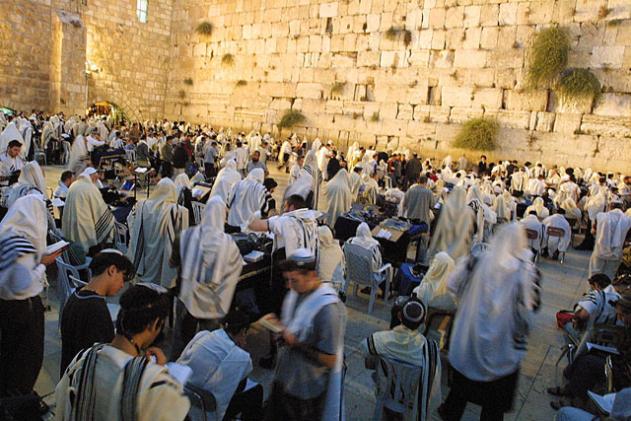Caroline Glick

The battle over the vacancy on the Supreme Court created by Justice Ruth Bader Ginsburg’s death drives home the extent to which judicial politics have become polarized, ugly and disruptive.
Some Republicans fighting for re-election in purple states, like Maine Senator Susan Collins, want to leave the seat vacant until after the November 3 elections. President Donald Trump and Senate Majority Leader Mitch McConnell prefer to have the fight now, while Republicans have the votes to confirm a conservative justice, rather than risk losing the opportunity on November 3.
This is not a minor dispute. How Republicans act now will have a major impact not only on the Court, but on the future of representative politics in America.
To understand the stakes involved, Republicans should consider Israel’s predicament. Today, a thoroughly politicized Supreme Court and an army of politicized government lawyers stand on the verge of destroying Israeli democracy.
It’s a complicated and convoluted tale. But a good place to begin it, is with a seemingly esoteric story that flashed across Israeli local news for a few days last month.
Israel’s (very small) conservative media reported on credible documentary evidence that Deputy State Prosecutor Liat Ben Ari committed several crimes and administrative infractions regarding an investment property she purchased with her husband. According to the story, Ben Ari and her husband falsely committed to live in the investment property in order to make themselves eligible to bid for the as-yet unconstructed home. After winning the bid, Ben Ari and her husband allegedly divided the newly constructed house into rental units, in breach of the building license.
This minor story was a major event because Ben Ari is the chief prosecutor in Prime Minister Benjamin Netanyahu’s trial for the “crimes” of negotiating with media outlets for less hostile coverage and receiving gifts of wine and cigars. Ben Ari is viewed as one of the people most responsible for the controversial decision to describe these trivial acts as “fraud and breach of trust and bribery,” and to indict a sitting prime minister on charges that are dubious at best.
Within days of the reports, Ben Ari’s misconduct was retroactively made legal. The municipality where the property is located convened a special planning board meeting and approved Ben Ari’s unlawful actions after the fact. News coverage dried up and Ben Ari carried on.
The building infractions were not Ben Ari’s only alleged offense over the years. She has also been credibly accused of submitting false written and oral testimony to courts on multiple occasions. None of the allegations have been investigated.
Ben Ari is also not the only senior prosecutor against whom credible corruption allegations have surfaced. Former state prosecutor Shai Nitzan—who oversaw Netanyahu’s investigation and indictments—and Attorney General Avichai Mandelblit—who indicted Netanyahu—have both been credibly accused of criminal corruption.
So too, several Israeli supreme court justices have been accused of criminal activity. Over the past two months, one of Israel’s top investigative journalists has exposed instance after instance in which Supreme Court justices—first and foremost, Chief Justice Esther Hayut—have adjudicated cases involving the financial interests of close friends and family members and ruled in favor of their friends’ and relatives’ side.
None of these allegations have been investigated. And the non-conservative media in Israel—that is, the vast majority of Israeli media outlets—have ignored all of the stories. Ben Ari’s preferential treatment is a small indication of what happens when politicians, intent on avoiding ugly fights and looking for good media coverage, surrender their ability to make senior judicial and prosecutorial appointments.
A generation ago, right-of-center Israeli politicians failed to understand the stakes in the fights over the Supreme Court appointments and appointments of senior Justice Ministry officials, including the attorney general and the state prosecutor. They bowed to the elitist view that politicians should leave appointments to “professionals” in order to avoid politicizing the judicial system.
The politicians’ deference to “professionals” in Israel was so great for so long a period that they granted Supreme Court justices effective control over selecting their successors on the bench. Israel’s elected leaders also agreed to form a committee, led by a Supreme Court justice, to vet appointments to senior government positions, including the attorney general and the state prosecutor. The justices used the power they had been granted to seize control not only over the government bureaucracy, but over the appointment and firing of government ministers, army generals, mayors and officials at all levels of the criminal enforcement system.
As a few contrarians—including American attorneys—warned would happen at the time, ceding the power to appoint justices and senior government officials to “professionals” did not keep politics out of the appointment process. To the contrary, it caused the radical politicization of the entire legal fraternity and much of the rest of the senior public service.
And this makes sense. Politics follow political power. When the justices wield political power, they are no less political than politicians. And when their power is absolute, so is the politicization. Controlled by the justices, the members of Israel’s legal fraternity all reflect the political views of their leadership.
Members of the brotherhood aim to increase their control over all aspects of public life in Israel. Consequently, they back one another as they seize ever-greater powers from politicians in the name of “professionalism” and “depoliticization.” As despots accountable only to themselves, members of the politicized legal fraternity believe they are more equal than the rest of the citizens of the state.
Over the past 20 years, prosecutorial decisions regarding political figures have uniformly advanced the political interests of the fraternity. Politicians who share its outlooks and support its prerogatives are left alone. Politicians who seek to reform the legal system, including the appointments process, have routinely found themselves under criminal probe—more often than not for specious alleged infractions.
Netanyahu’s prosecution is the most extreme and audacious demonstration of the politicization of the legal system, to date. And to a degree, it isn’t surprising. The elevation of unelected lawyers unaccountable to the public over elected leaders has fomented a criminalization of politics.
This horrific state of affairs would never have come about if elitist and naïve right-of-center politicians had not blithely conceded their power to appoint senior officials in hopes of adulation from the liberal press.
And this returns us to the United States, and the dispute over whether to wage a messy and ugly confirmation battle for a conservative justice before November 3.
Every Supreme Court nomination by a Republican president since Ronald Reagan’s nomination of Robert Bork in 1987 has been met with vicious opposition from the Democrats.
During his confirmation hearings in 1991, Justice Clarence Thomas referred to the campaign of personal destruction to which he was subjected by Democratic senators, led by then-Judiciary Committee Chairman Joe Biden, as “a high-tech lynching.”
recomended by: Leon Rozenbaum
 The treatment Republican appointees have been subjected to has only gotten worse since then, reaching a shocking low during Justice Brett Kavanaugh’s confirmation hearings.
The treatment Republican appointees have been subjected to has only gotten worse since then, reaching a shocking low during Justice Brett Kavanaugh’s confirmation hearings.
The Democrats have made securing a liberal Supreme Court majority their chief goal because they view the Court as a vehicle for achieving increasingly radical policy goals. Activist justices acting as a separate legislative branch can dictate policies that the majority of Americans oppose. The Supreme Court’s mandate of gay marriage was just one example of how justices have replaced voters and lawmakers as arbiters of social policy.
The question before Republicans today is whether they are willing to have the bruising fight now and block the possibility of a progressive takeover of the Court for the foreseeable future, or whether they are willing to risk losing the opportunity to secure a conservative Court to avoid an ugly fight before the election.
Israel’s experience should serve as a cautionary tale for risk-averse Republicans.
Ever since the state prosecution opened criminal probes against Netanyahu three years ago, Israeli society has been in the throes of a to-the-death struggle between those who wish to depoliticize the legal fraternity by restoring political control to senior appointments and limiting its powers, and those who insist that “professionals” are inherently incorruptible and blessed with better judgment than the politicians who must answer to their “ignorant” voters.
Changing the system will require both an absolute majority in the Knesset and, perhaps more importantly, elected leaders willing to risk criminal prosecution and horrible press coverage to win the fight.
With Israel’s plight in mind, Republicans should understand that no matter how ugly the fight over whether to confirm a new justice to the Supreme Court before November 3 becomes, it will be a walk in the park compared to the war for the survival of democracy in which Israelis are now engaged.
The alternative to political battles over the composition of the Court is not political peace. It is a political body that answers to no one.
Originally published in Newsweek.
 Shira Choir, Levy Falkowitz, Nafshi
Shira Choir, Levy Falkowitz, Nafshi







